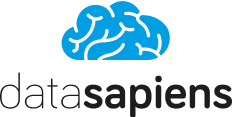Empowering Business Intelligence with AI: Our Journey with Large Language Models
Introduction
At datasapiens, we operate an enterprise-level business intelligence and customer insights solution. The solution encompasses everything from the data lake to the advanced query engines with a full suite of applications.
Applications Overview
Business Intelligence encompasses a broad spectrum of analytics, including sales, margin analysis (both front-end and back-end), inventory management, budget tracking, category analysis, store performance, and staff efficiency.
Customer Insights delivers deep understanding through insights generation, assortment optimization, promotion effectiveness, and sophisticated report and segment-building tools.
Self-service Advanced Analytics and Reporting are made accessible through the integration of Superset, enabling users to derive complex insights and visualize data in a user-friendly manner.
Coding and Data Science capabilities are facilitated through JupyterHub, providing a flexible environment for data exploration and model development.
In our pursuit of continuous improvement and efficiency, our platform is designed to provide users with actionable insights and recommendations, bypassing the need to sift through reports manually. To meet this need, our platform features text-based summaries that highlight information. These summaries are powered by conditional logic atop a framework.
Turning to Large Language Models for improvements
The advent of Large Language Models (LLMs) in the past year presents an opportunity to elevate the summaries provided by our platform. LLMs can analyze large volumes of text data, extract insights, summarize findings, and generate reports.
We developed a proof of concept (PoC) to explore the advantages of leveraging Large Language Models (LLMs). Our methodology incorporated a "multi-agent conversations" technique facilitated through Autogen. This innovative approach involves instantiating multiple agent instances to enhance the output's quality. A comprehensive summary of the PoC is depicted in the diagram below.
Observations and Results
Our findings reveal that applying LLMs holds considerable promise (see below). The models excel in summarizing data, albeit with recommendations that sometimes lack specificity. We've been careful to maintain output at a general level to avoid inaccuracies or "hallucinations".
Tools Utilized
Our PoC leveraged ChatGPT4 alongside Meta's Llama 2. We observed that Llama 2, despite being open-source and less costly to implement, delivered inferior performance compared to ChatGPT4, both in terms of result accuracy and processing speed.
Findings
Advantages
Relevance: Tailored recommendations suited to individual preferences.
Scalability: Our approach is not limited by the pre-existing conditional logic framework.
Integration: Seamless integration of LLMs into our platform.
Limitations
Response Time: A 60-second delay may impact user experience.
Accuracy: The potential for producing irrelevant or inaccurate outputs.
Cost: Implementing closed-source models significantly affects infrastructure expenses.
Watch this space
As the field of LLMs rapidly advances, we are excited about their future role in enhancing our business intelligence solutions. We believe overcoming limitations and harnessing these models' potential will revolutionize how insights are generated and consumed. Allowing our clients to perform better for their customers.
We invite you to share your thoughts or experiences with LLMs. How do you see them impacting your industry?




